Tingkilan: Gambus Fusion in East Kalimantan
Location: Samarinda, East Kalimantan
Sound: Tingkilan
In the long list of Indonesian music instruments, the gambus is something of an outlier - it is played across the lengths of Indonesia, from Sumatra to Solor, a uniquely massive stretch for a country with such heterogeneous musical traditions. And then there is its foreignness: in tone and shape, the gambus closely resembles the Middle Eastern oud, the classic pear-shaped lute so common in Arabic music. In fact, musicologists have traced the gambus back to the qanbus, a similar instrument originating in Yemen which spread across the Arabian peninsula. Because of these Arabic roots, the gambus is largely thought of as a "Muslim" instrument, even when the music has no religious content. Interestingly, the ethnomusicologist Philip Yampolsky has suggested that it is often allowed by conservative Muslims when other secular music is forbidden.
In East Kalimantan, the coastal people called Kutai have played the gambus for as long as anyone can remember. Combined with drums and singing, the Kutai call their gambus music tingkilan, or when accompanied by dance, jepen (also the name for the dance itself.) I came to Samarinda expecting to meet a traditional tingkilan group, but what I found was perhaps even more interesting. The group I met, while proud of their music and heritage, were not purists. The style of tingkilan they played was distinctly modernized, but not via synthesizers and drumkits. Rather, the gambus had been combined with ukulele, cello, and Javanese kendang drums in a synthesis with kroncong, the syncretic Portuguese-influenced early pop music originating in Java. Asfi, the leader of the group that I recorded, explained that tingkilan had been fused with kroncong music as early as the 1950s, with the notion that the added rhythm and harmony would make for a more interesting sound.
The combination was like something I'd never heard before -gambus has often been played in ensembles called orkes gambus in a style that very closely mimics Arabic music - orkes gambus tapes even regularly feature Indonesian men wearing thawbs on their covers. It was odd and amazing, then, to hear it in this distinctly de-Arabized fusion, with the rhythmic ukulele, percussively slapped cello, and crooning vocals so strongly recalling the Portuguese-Javanese flavor of kroncong.
Context:
Through a cooperative effort with my school here in Bandung, I quite suddenly found myself teaching English at a natural gas refinery in East Kalimantan for one month. Before my trip, I looked into the music of the area - I was curious whether there was any culture at all in this part of Kalimantan, famous for being a province utterly engulfed by industrial behemoths like mines, oil rigs, and palm oil plantations, not to mention the refinery for which I'd be working. I was happy to stumble upon tingkilan music, and made it my mission to track some down while I was working.
Upon making it to Bontang, however, I found that perhaps this was not the perfect place for a culture lover. The industry of East Kalimantan has made it a melting pot of ethnic groups from all over Indonesia - Bugis, Banjarmasin, and Javanese people all make their way there in search of riches. While this sounds great, for a music hunter it spells trouble - none of these folks brought their music with them, and the local Kutai population has diminished, along with their traditional music.
Luckily, I met Asfian Nur Gusprada, a young musician based out of Samarinda, the capital of the province. One bored weekend, I made a promise to Asfi (as he prefers to be called) that I would come out to meet him and record his tingkilan group.
My students from the natural gas company dropped me off at Asfi's families house, and although it was my first time there, I knew instantly that we'd found the reight place: the sounds of electrified gambus was booming out of the house and into the neighborhood. A dance rehearsal was in full swing, with young girls playing dancing in unison in a large mirrored room full of instruments. The gambus was playing along with electric bass and a modified drum kit decked out with frame drums. I was intrigued but mildly disappointed - was this tingkilan music?
After the rehearsal, I talked to Asfi and he explained that he had an acoustic ensemble that would be more to my liking - they just had to rehearse and then they'd be ready to perform. Asfi introduced me to his group - all very young, probably still teenagers (Asfi himself is only nineteen) and quite a few not even Kutai - one was from Banjarmasin, another Javanese. Asfi explained that his is a musical family - his mother is a dance teacher, his father also a musician. His generation is keeping the spirit of Kutai music alive, while also playing, curiously enough, Dayak music, even travelling to Europe to share Dayak music and dance (but, oddly enough, not the Kutai music - is it not exotic enough for European audiences?)
After a quick rehearsal, we headed up to the now empty dance studio and Asfi's group, shy but exceedingly professional and talented, went through a number of their unique kroncong-influenced songs. As I watched them play, I felt proud: while I love meeting ancient musicians with one boney foot stuck in the past, I have to stop myself from seeing old folks playing old music as the image of "authentic" Indonesian music. Here were six young Indonesians, undoubtedly bumping Rihanna on their cellphones and going to the mall in their spare time, but nonetheless putting their heart and time into keeping a shrinking tradition alive.


